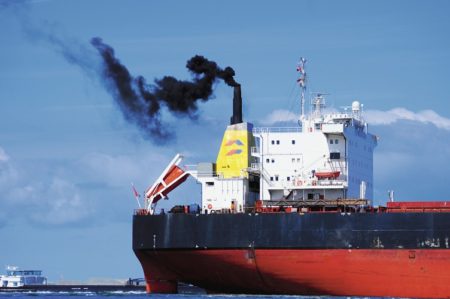Earlier this year, the Moore Stephens international member firm in Greece published ‘Owners’ Dilemma’, a thought leadership article looking at the financial considerations arising from the decision about whether to fit scrubbers to comply with the IMO regulation for reduced sulphur emissions (IMO 2020), from 1 January 2020.
Many ship-owners and operators have started to consider the commercial and accounting implications as a result of the need to comply with IMO 2020. The market is expecting that no more than 10 % of vessels in service will have scrubbers installed by the time the regulation comes into effect, with a significant amount of this expenditure still to be incurred. The alternative course will be to operate vessels without scrubbers and consume low sulphur bunkers, or other compliant fuels, which are expected to be more expensive.
From a ship-owner’s perspective, where a decision is taken to retrofit scrubbers any directly attributable costs would be expected to be capitalised and depreciated over the remaining life of the vessel in accordance with IAS 16, Property, plant and equipment. This depreciation period assumes that the scrubbers will last for the same period of time as the vessel to which they are fitted.
Where the costs to install scrubbers have been incurred, and capitalised, should an impairment assessment arise discounted future cash flow projections will need to include the cost of bunkers. The market uncertainty about differentials in bunker prices and how these may persist in the future presents a challenge. The availability and pricing of low sulphur bunkers in the future, together with the uncertainty of whether freight rates or time charter rates will increase to offset the more expensive low sulphur bunkers or the cost of scrubbers, are factors that ship-owners will need to consider when making impairment assessments.
Where a decision to install scrubbers has been taken at the financial reporting date, but the costs are yet to be incurred an accounting issue can arise with respect to impairment assessments. IAS 36, Impairment of assets does not allow future capital enhancements, and their related benefits, to be reflected in the discounted future cash flow projections
This potentially creates a conflict between accounting standards and the commercial position. If scrubbers are to be fitted but the cost and benefits are excluded from an impairment assessment, there is a greater likelihood of an impairment having to be recognised, as management must include the higher costs of low sulphur bunkers in their discounted future cash flow projections. IAS 36 requires this even though a decision to install scrubbers has been made. Once scrubbers are fitted and their expected benefit reflected in subsequent value in use calculations this may lead to the reversal, in whole or in part, of previously recognised impairment.
This tension between IAS 16 and IAS 36 is not something which has an obvious solution and adds to the challenge of moving towards the low sulphur fuel environment. If no impairment arises for a vessel without scrubbers this issue should fall away, but in shipping that possibility can never be dismissed.
The considerations above should be taken into account at the forthcoming financial year end.
Source: Moore Stephens

